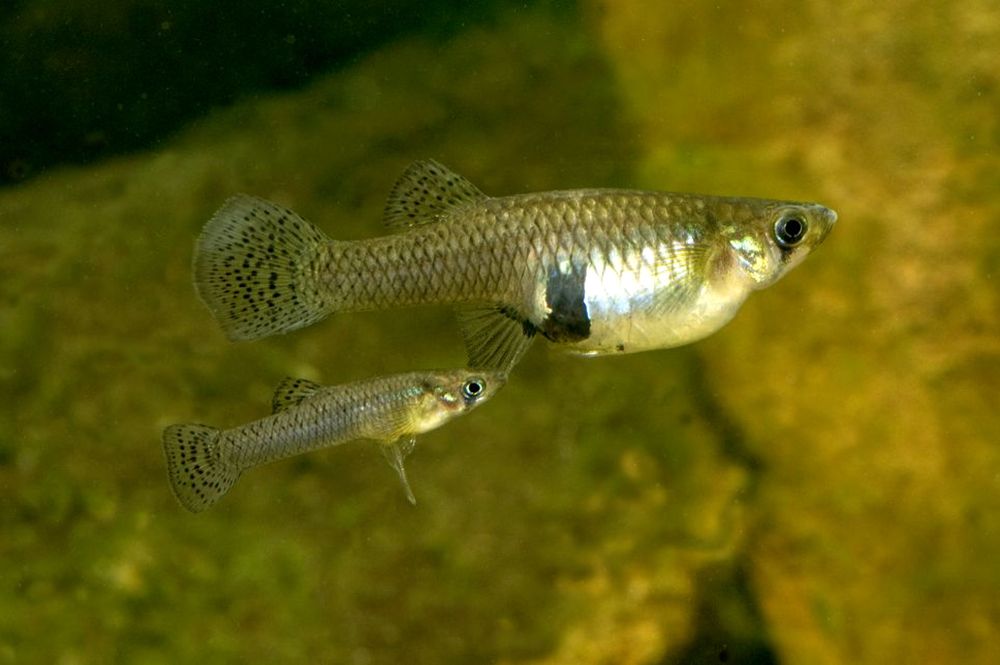Microplastic (MP) are a heterogeneous collection of particles ranging in size from a few microns to several millimeters in shape. The composition varies depending on the source of origin (Blair et al., 2017). MP may be found everywhere, with causes ranging from a variety of anthropogenic activities to high and rising levels of microplastics pollution, posing a hazard to biota in the terrestrial and aquatic environment (Zhang et al., 2019). Furthermore, MP are capable of carrying organic contaminants. These contaminants can bind to plastic particles in adjacent water or are already present in polymers as additives or monomers during the manufacturing process (Klein et al., 2015). These adsorbed organic contaminants can be transported by buoyant plastic particles into surface-feeding species and less polluted aquatic environments, where desorption processes can result in increased aqueous pollutant concentrations (Endo et al., 2013).
Because of their small size, microplastics can be taken up by organisms and act as stressors, causing injury to organ systems (Lusher et al., 2013). MP can translocate to tissue and even the liver after consumption, causing inflammation and lipid buildup, as well as slowed growth, immobilization, and death (Tibbetts et al., 2018). Toxicity research has revealed that microplastic exposure can have both physical and toxicological effects on aquatic biota (Steer et al., 2017).
Fish are significant as sensitive indicators of the effects of stressors in aquatic ecosystems since they are one of the most diverse groups of animals and have enormous ecological and commercial worth (McCauley, 1990; Rochman et al., 2013). Additionally, they provide a variety of ecosystem services, including (1) food dynamics and nutrient balances; (2) carbon-flow regulation; (3) sediment process regulation; and (4) ecological linkages. In freshwater environments, several fish species have been studied for their consumption of microplastics and their impacts, including Gobio gobio (Sanchez et al., 2014), Hoplosternum littorale (Silva-Cavalcanti et al., 2017), Rutilus rutilus (Ku´smierek and Popiołek, 2020), Mystus bocourti, and Cyclocheilichthys repasson (Kasamesiri and Thaimuangpho, 2020). Because fish can intentionally swallow microplastics by mistaking particles for natural prey or accidently if microplastics are already in the body of their prey, microplastics with small particle sizes, buoyancy, and appealing colors are extremely likely to be readily taken up or consumed by fish (Jovanovi´c, 2017). MP have three broad, non-exclusive effects on fish after ingestion: (1) physical effects of MP themselves, such as blocking the gastrointestinal tract or causing falsely satiated substances; (2) the release of plasticizers and other harmful chemicals from within MP; and (3) the de-sorption of harmful pollutants linked to MP (Strungaru et al., 2019).
The effect of various xenobiotics on aquatic organisms can be assessed using oxidative stress indicators (Magara et al., 2019). Microplastics accumulate up and carry through cells and tissues, creating oxidative stress in animals (Browne et al., 2013). MP accumulation activates oxidative stress response pathways in organisms such as superoxide dismutase (SOD), catalase (CAT), and glutathione peroxidases (GSH-Px) (Deng et al., 2017). These enzymes all work to eliminate various kinds of reactive oxygen (ROS) (Deng et al., 2014). Malondialdehyde (MDA) is a byproduct of the breakdown of unsaturated fatty acid peroxide produced by reactive oxygen species (ROS), and it is a sign of lipid peroxidation (LPO) (Zhang et al., 2019). MDA is a sensitive marker for assessing oxidative damage in polluted fish (Hamed et al., 2020).
MP accumulation in fish via two basic routes, namely respiration, and digestion, will have an effect on the organs and digestive tract’s condition. At all collection sites, MP abundance is increasing in both gill and digestive tract samples (Buwono et al., 2021a). The study used the gambusia fish (Gambusia affinis), which may be found in abundance along the Brantas River. Gambusia affinis fish from the Brantas River was employed as a microplastic-contaminated agent in this study. Gambusia affinis is classified as a foreign invasive species in Indonesia due to its ability to reproduce quickly and its strong tolerance to environmental changes. (Adam et al., 2019). Gambusia is a fish species that can settle in various habitats, from clean to contaminated waters, and is tolerant of temperature and salinity fluctuations, making it a good biomonitoring agent (Pyke, 2005; Rautenberg et al., 2015). Gambusia lives in groups and does not move a lot (immobile); adult fish are found in open water, while numerous smaller fish are found in areas with shallow vegetation (NatureServe, 2019; Pyke, 2005).
In terms of water pollution, the Brantas River is one of Indonesia’s rivers that has been contaminated by industrial and domestic wastes that can be direct or indirect discharge (Risjani et al., 2020). Waste loads generated by human activities, such as residential, industrial, wastewater, and solid waste (Roosmini et al., 2018). The purpose of this study was to investigate the oxidative stress responses of microplastic-contaminated Gambusia affinis gills and digestive tract obtained from the East Java Brantas River, Indonesia. To describe the association between MP, oxidative stress, and oxidative damage, the pathway model was adopted.
The result shows that the digestive tract had much greater levels of superoxide dismutase (SOD), catalase (CAT), and malondialdehyde (MDA) than the gill. SOD concentration in the gills was 13.7 ± 5.3 U/mL, while SOD concentration in the digestive tract was 16.3 ± 3.6 U/mL. The CAT concentration in the gills (5.3 ± 2.9 ng/mL) was higher than the CAT concentration in the digestive tract (10.5 ± 2.8) ng/mL, while the MDA concentration in the gills (690.8 ± 135.6 mU/mL) was higher than the MDA concentration in the digestive tract (869.6 ± 122.2) mU/mL. MP abundance has a direct effect on SOD and MDA in the gills. Meanwhile, the quantity of MP in the digestive tract has a direct effect on SOD and CAT, which affects the development of the MDA response.
Author : Agoes Soegianto, Nanik Retno Buwono , Yenny Risjani
Published on Chemosphere 293 (2022) 133543





